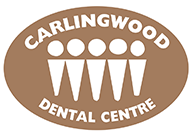When you’re standing in front of your mirror threading floss through your teeth, have you ever stopped to wonder about the origin of dental floss, who invented it, or how has it changed over the years? For those of you who have landed on this page, the answer is probably yes. And, lucky for you, we have the answers to help settle your curiosity.
Check out this brief overview of the evolution of dental floss and how it’s progressed today.
The Origin of Dental Floss
Dental floss first emerged as a concept that was practiced and recommended by a dentist from New Orleans back in 1815. At the time, thin silk was used to thread between teeth in order to clean the gum line. But it wasn’t until 1882 that the whole concept really began to gain attention. The Codman and Shurtleff Company liked the idea and began marketing the unwaxed silk dental floss. A few years later, Johnson & Johnson also entered the market, offering the first official line of dental floss in 1896, and soon after, patented their floss, manufacturing it from medical-grade silk.
The Evolution of Dental Floss
As the dental industry continued to evolve, so too did the material production of dental floss. Nylon offered a more favourable choice as opposed to silk thanks to the robustness of the material. It could hold up to the abrasiveness while avoiding shredding when used in between the teeth. So during the 1940s, silk was eventually replaced with nylon. With the materialization of nylon, waxed dental floss also soon emerged during the 1950s, allowing the thread to glide in between the teeth easily.
Dental Floss Today
As the industry continues to evolve, we can now find a wide range of different options for dental floss – flavoured, spongy, soft, Gore-Tex, stiffened end, looped, and floss that can be used for braces. It’s never been easier to reach those forgotten areas in between your teeth!
Despite the advancements and evolution of dental floss, the one aspect that still remains is the importance of using it regularly for maintaining healthy gums. Both brushing and flossing daily are equally important for patients to perform as part of their regular oral hygiene routine. So, the next time you grab the floss, now you’ll know a little bit more about where and how that tiny piece of thread became to be such a fundamental part of our present-day oral care practice.


